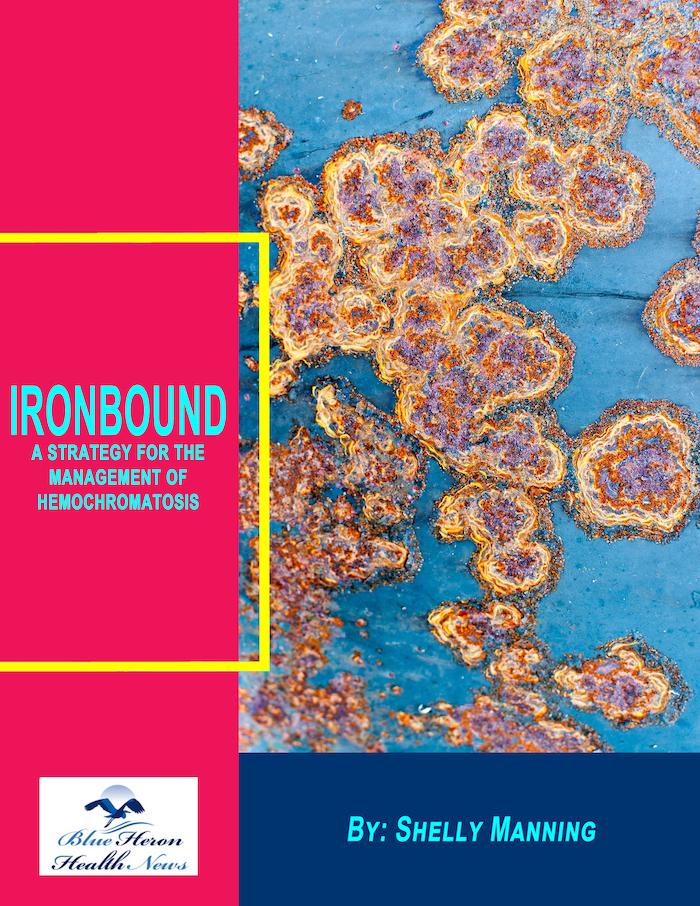Ironbound™ A Strategy For The Management Of Hemochromatosis By Shelly Manning if you are suffering from the problems caused by the health condition of HCT due to excess amount of iron in your body then instead of using harmful chemical-based drugs and medications you are recommended to follow the program offered in Ironbound Shelly Manning, an eBook. In this eBook, she has discussed 5 superfoods and other methods to help you in reducing the level of iron in your body in a natural manner. Many people are benefited from this program after following it consistently.
What role does lack of exercise play in cholesterol oxidation?
How Lack of Exercise Contributes to Cholesterol Oxidation
A sedentary lifestyle plays a significant role in cholesterol oxidation, increasing the risk of cardiovascular disease. Without regular physical activity, oxidative stress levels rise, HDL (good cholesterol) function declines, and LDL (bad cholesterol) becomes more prone to oxidation. Below are the key ways lack of exercise contributes to cholesterol oxidation.
1. Increased Oxidative Stress and Free Radical Formation
Exercise helps regulate the balance between oxidative stress and antioxidant defense mechanisms. When physical activity is lacking:
- Higher Reactive Oxygen Species (ROS) Levels:
- Without regular exercise, the body’s ability to neutralize ROS (free radicals) declines, leading to increased oxidized LDL (oxLDL) in the bloodstream.
- Reduced Antioxidant Enzyme Activity:
- Exercise enhances the production of antioxidant enzymes (e.g., superoxide dismutase, glutathione peroxidase), which help prevent cholesterol oxidation. A sedentary lifestyle reduces these protective enzymes.
- Increased Lipid Peroxidation:
- Excess ROS damage lipids in LDL cholesterol, making it more likely to oxidize and contribute to plaque buildup in arteries (atherosclerosis).
2. Reduced HDL (Good Cholesterol) and Impaired LDL Clearance
High-density lipoprotein (HDL) plays a crucial role in removing oxidized LDL from the bloodstream. Lack of exercise negatively impacts HDL levels in several ways:
- Lower HDL Levels:
- Regular exercise increases HDL, which helps transport oxidized LDL to the liver for removal. A sedentary lifestyle reduces HDL, allowing oxLDL to accumulate.
- Weakened HDL Function:
- Even if HDL levels remain stable, lack of exercise reduces HDL efficiency, making it less effective at clearing oxLDL from arteries.
3. Increased Inflammation and Endothelial Dysfunction
Chronic inflammation and damage to blood vessel linings (endothelium) accelerate cholesterol oxidation. Without exercise:
- Higher Levels of Pro-Inflammatory Cytokines:
- Sedentary behavior promotes chronic inflammation, increasing tumor necrosis factor-alpha (TNF-α), interleukin-6 (IL-6), and C-reactive protein (CRP)—all of which contribute to oxLDL formation.
- Weakened Blood Vessel Walls:
- Exercise improves vascular elasticity and endothelial function, reducing the ability of oxidized LDL to adhere to blood vessel walls. Without exercise, arteries become more vulnerable to oxLDL buildup and plaque formation.
4. Insulin Resistance and Increased Small, Dense LDL Particles
A sedentary lifestyle contributes to insulin resistance, which promotes cholesterol oxidation in several ways:
- Higher Blood Sugar Levels:
- Elevated glucose increases oxidative stress, making LDL more prone to oxidation.
- Increased Production of Small, Dense LDL:
- Lack of exercise leads to the formation of small, dense LDL particles, which are more easily oxidized than larger LDL particles.
- Impaired Fat Metabolism:
- Exercise helps break down excess fats. Without it, triglycerides rise, worsening LDL oxidation.
5. Slower Blood Flow and Reduced Oxygen Delivery
Regular exercise enhances blood circulation and oxygen delivery, which helps prevent cholesterol oxidation:
- Poor Circulation and Stagnant Blood Flow:
- When physical activity is low, cholesterol and fats remain in circulation longer, increasing their chance of oxidation.
- Reduced Nitric Oxide (NO) Production:
- Exercise stimulates nitric oxide, which protects against LDL oxidation by keeping blood vessels relaxed and clear. A sedentary lifestyle reduces NO production, making oxLDL more likely to accumulate.
Conclusion: Exercise as a Natural Protector Against Cholesterol Oxidation
A lack of physical activity significantly increases cholesterol oxidation by promoting oxidative stress, inflammation, poor lipid metabolism, and impaired circulation.
How to Reduce Cholesterol Oxidation with Exercise:
✅ Aerobic Exercise (e.g., brisk walking, cycling, swimming): Improves HDL function and reduces oxidative stress.
✅ Strength Training (e.g., resistance bands, weightlifting): Enhances insulin sensitivity and reduces small, dense LDL.
✅ Interval Training (HIIT): Lowers inflammation and boosts antioxidant defenses.
✅ Daily Movement (e.g., standing, stretching, walking breaks): Prevents prolonged oxidative damage from sedentary behavior.
Bottom Line:
Regular exercise is one of the most effective ways to reduce LDL oxidation, lower inflammation, and protect against heart disease. Even small increases in daily movement can significantly lower the risk of oxidized cholesterol buildup and improve overall cardiovascular health.

Ironbound™ A Strategy For The Management Of Hemochromatosis By Shelly Manning if you are suffering from the problems caused by the health condition of HCT due to excess amount of iron in your body then instead of using harmful chemical-based drugs and medications you are recommended to follow the program offered in Ironbound Shelly Manning, an eBook. In this eBook, she has discussed 5 superfoods and other methods to help you in reducing the level of iron in your body in a natural manner. Many people are benefited from this program after following it consistently.